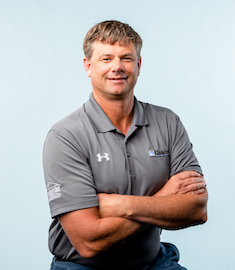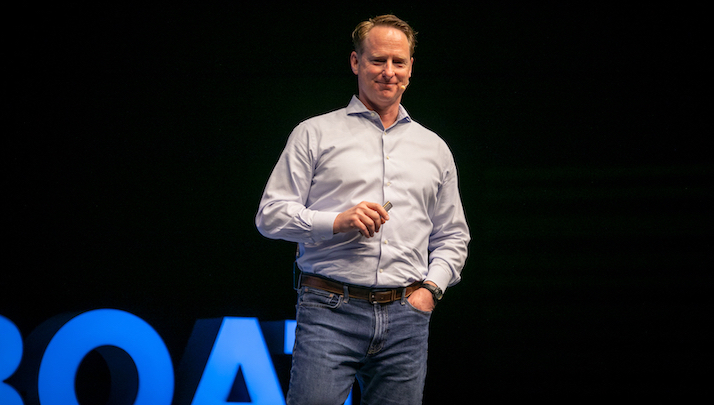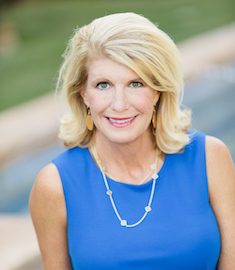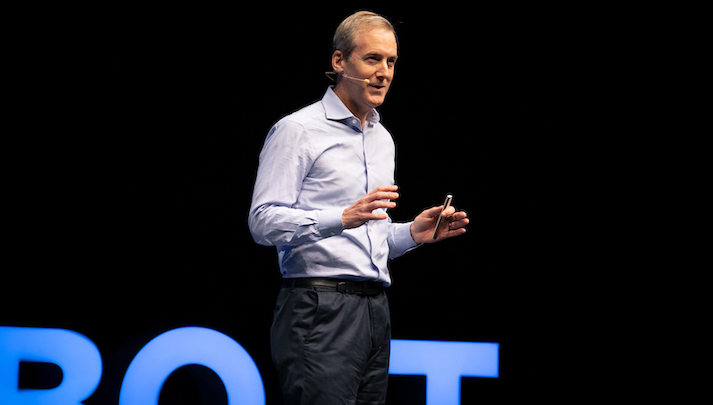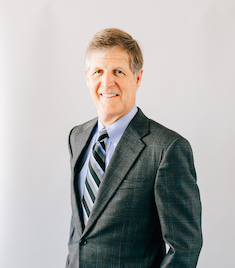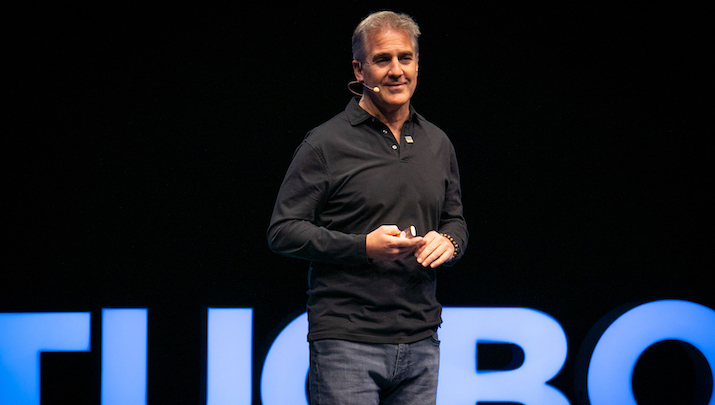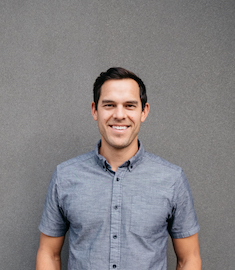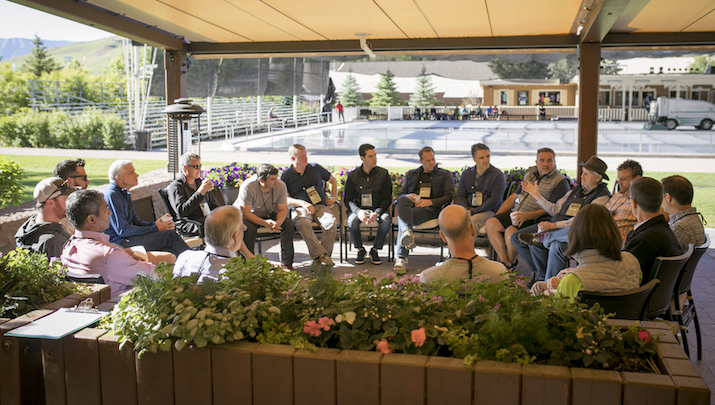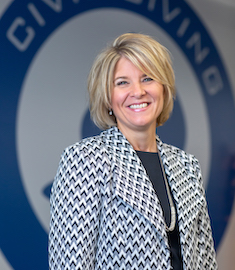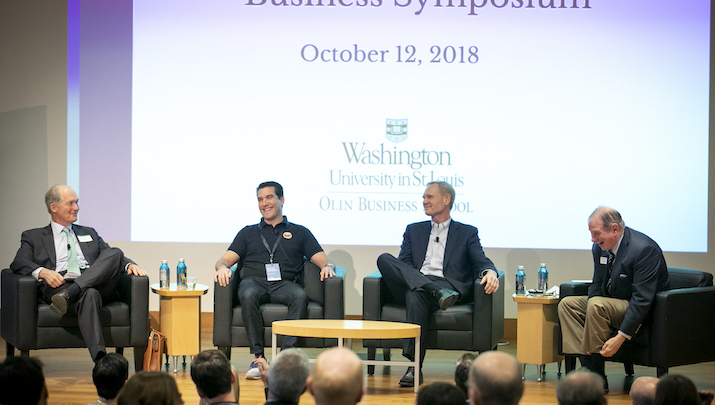Elevating Culture to the C-Suite
I have always been hungry for self-improvement. I have sought out mentors over the years, and I am a voracious reader. As I read, listen, and learn, I have transformed my personal and business trajectory.
It was through this ongoing journey of self-discovery that I attended a conference and met a woman who served as Chief Culture Officer at a large, national retailer. I was intrigued by her description of her role and the impact of her work cultivating and sharing the company’s culture among employees, customers, and the wider community.
My Evergreen® company, Cantey Foundation Specialists, couldn’t be more different than the huge, public company that she served, but I felt the impact of a similar role in my own business could be profound. I wanted to know that our mission and Purpose were not only something we created to put down on paper but that we were living them in our daily work and in the community.
Two years in, I can say that implementing the position of Culture Ambassador, as we’ve termed it, has been the one of the best operational decision I’ve made. The Culture Ambassador is an executive-level position, independent of HR, held by a leader who engages with employees in our office, on job sites, and remotely with our sales force, listening to our team’s concerns, responding to questions and requests, and continually reinforcing our Purpose and Values.
This regular interaction is key in our business because with the exception of our 25 office-based employees, the balance of our 130-person team is out in the field—either laboring or engaged in sales efforts—Tuesday through Friday. Before we implemented the Culture Ambassador’s role, our only opportunity to connect with our staff was our team meeting on Monday. For the rest of the week, that large, semi-remote workforce was dispersed, and maintaining communication beyond the necessary tactical and strategic back-and-forth was challenging.
The work our people do can be grueling. Often, our production guys are spending days in crawl spaces, doing uncomfortable, dirty work. It’s tough. We want them to know that we understand the challenges they face—and that we want to ensure their safety and their overall job satisfaction.
The Culture Ambassador plans company events and perks for our employees and, most important, spends time visiting job sites, gathering data, and listening. She gets to know team members, takes them to lunch, and helps maintain an open line of communication. She keeps a close eye on job-site safety as well.
Because the position reports directly to me, I now have a consistent, accurate understanding of how our people feel and what they need. The Culture Ambassador evaluates the team’s questions and concerns and is able to route them to a manager or to me. We can respond to issues nimbly and efficiently react. As a result, our people feel appreciated and heard.
This approach isn’t the norm in the construction field. In fact, when I shared my intention to hire for the position, more than one peer in the industry told me I was crazy. But that response inspired me to do more. Our Purpose is to Redefine Our Industry, and this is one way we are trying to do so. I want to continue to build a unique company, one that sets a new standard for what employees and customers can expect. I want people to really want to work here and to know that they can grow and improve their lives. I want our team to feel the same opportunity for learning and personal development that has been essential in my journey.
Recently, I was able to see just how well the Culture Ambassador allows us to continue to work toward that goal. During a visit with employees, she heard from a guy who had been speaking with his manager about a growth plan—a strategy to take on more responsibility and move up in the company. He was frustrated because though he had expressed interest to grow, nothing was happening. This man was not an employee we wanted to lose.
At 5:30 p.m. on a Friday afternoon, I got word about the situation, and we ended up working with this employee through the weekend, coaching him through the situation and developing a plan to work with him toward a management track. I was able to walk the talk of our culture and reiterate our commitment to self-improvement and growth with this employee. I think we could have lost a great team member if we hadn’t had someone to be that ear on the ground, to understand his frustration and get that information to me.
Sometimes, the issues we’re able to resolve are more personal. In one instance, the Culture Ambassador heard that a team member’s car had been totaled and that the person was planning to quit because he could not get back and forth to work. We were able to put together a plan for this person to use a spare vehicle we had available until they could get back on their feet. In the past, before we had someone looking out for just this sort of thing, this person probably would have been embarrassed to make their problem ours, and we would have lost a good employee without our having the opportunity to help.
In addition to providing support, showing gratitude, and reinforcing our culture internally, our Culture Ambassador has also allowed us to share our company values with our community in Camden, South Carolina. The role oversees charitable efforts and planning for employees to be involved in events that allow us to do good in the community we serve. We partner with Habitat for Humanity and with United Way, and those projects would not be possible without the Culture Ambassador managing the planning and administrative tasks connected to those efforts.
At the end of the day, my decision to create a new position that focuses on our culture within the company and in our community was born of my desire to do more for our people. And it’s allowing me to do just that: We are now able to solve issues that in the past we would never have known were happening until it was too late. If I had to put a dollar amount or percentage point of value to the bottom line to support this position, I would struggle, but the role is now just a part of who we are and adds to the bottom line in an unquantifiable way.
William Cantey is CEO of Cantey Foundation Specialists.
The Rise of Private Equity
Twenty percent of U.S. middle market businesses are now owned by private equity (PE). PE firms have over $3 trillion of additional purchase power. What is driving this growth, and will it change? What is the PE playbook, and how is it used to convince owners to sell and to “add-value” after purchase? What can Evergreen® companies do about it?
In this opening presentation from Tugboat Institute Summit 2019, Dave Whorton offers key statistics and drivers in the rise of PE, valuable insight into the PE playbook, and 14 things Evergreen CEOs and their teams can do about it.
The Million Dollar 401(k)
Our family-owned, Evergreen® company, American Metals Supply Co., was founded by my grandfather, Al Hassebrock, in Springfield, Illinois in 1962. My dad, Steve, joined the business in 1971 and continues to serve as Chief Strategy Officer today.
When I joined the company in 1997, we had two locations, and my dad, who lives and breathes the company, had been continually assuming more responsibilities as the business had expanded through the years. When I stepped in, I saw that if we wanted to grow to continue to create new opportunities for our employees, I would need to implement some infrastructure—the two of us, no matter how devoted, could only take the company so far.
As I learned about best practices and sought to develop infrastructure, I was guided by the People First approach that my grandfather and my dad had embraced. We had always known that our ability to serve customers as a distributor of sheet and coil steel, prefabricated duct and fittings, and HVAC products was dependent on attracting and retaining great employees. My dad had told me many times that “we've got to get the best people and reward them well—better than is standard in the market—because otherwise we're not going to grow and be successful.”
That idea of offering our people more than is expected, going above and beyond the industry standard in how we recognize and support our team, has shaped our approach from the beginning. With that value as my guide, I have worked—first as CFO and, since 2006, as President—to build and develop benefits and culture that ensure we are able to compete for the best talent. Because let’s face it—we are not the most glamorous of industries. People are not rushing out of college seeking out jobs in buying and selling steel. And yet, we have managed to continually attract employees and create new opportunities for our people as we’ve grown to now eight locations serving ten states. We currently employ 110 people, about evenly split between driver/warehouse positions and sales and administrative roles.
One of the key ways we have chosen to offer our people more is by partnering with them in their retirement savings in a powerful way. When I joined the company, we had a profit-sharing plan in place, providing employees up to six percent of their compensation annually with no requirement for them to contribute. But as 401(k)s became popular, we wanted our employees to be able to put some of their own money in and to have more accountability and more choice in what the investments were, and how much they wanted to contribute, while still incentivizing them and rewarding them for contributing.
So, we switched to a 401(k). Today, as before, we contribute up to six percent of their compensation annually. However, we have added a dollar-for-dollar match up to the first six percent on the 401(k) side. So, if somebody's putting in six percent, they're getting 12 percent from us for a potential total of 18 percent each year. We have a 92 percent participation rate in the program (versus a 67 percent participation rate among peer companies), and 74 percent of our participants have deferral and company contributions of at least 15 percent a year (versus 15 percent of employees saving at that level in peer companies).
And while these stats are fun to roll out and share, there’s another number that I like to offer up: $2.1 million. That’s the amount that the person with the largest balance in our 401(k) plan right now has saved for retirement. This is someone without a college degree—not an executive and not an owner, simply someone who has worked at the company for many years and has contributed every year. This money sits in this individual’s personal account, unlike pension or ESOP retirement plans, which are dependent on the company for future payout.
I love to share this example because to be able to positively impact a life and a family by offering security in retirement is an honor. I always knew that good people were the key to running a good business, but the more we do for people, and the more we see the reward in it, the more inspiring it is to continue to go above and beyond. Seeing employees—whether delivery drivers, warehouse workers, or executives—be financially set for retirement is incredibly rewarding.
As we continue to look ahead at how we can maximize the benefit of this program for our employees, education is key. We work hard to share the impact of this powerful saving opportunity in newsletters, at company meetings, and across other outlets. Because the impact of this type of benefit can take time for an employee to appreciate, it’s important to continually reiterate the transformative potential of this type of consistent saving.
While our retirement benefit is one of many People First programs we have developed—others range from wellness initiatives to philanthropic programs to an employee hardship fund—it’s certainly one of the most meaningful to me. Going above and beyond for our people is the Purpose that grounds me today.
Chrissy Nardini is President of American Metals Supply Co.
A Pragmatic, Non-visionary Business Worldview: Lessons from The Outsiders
Will Thorndike is an investor and author of The Outsiders, a study of eight unconventional CEOs who did an exceptional job of allocating capital in their businesses. In this presentation from Tugboat Institute Summit 2019, Will shares the essential lessons of the CEOs he profiled in his book, as well as updated insights.
There’s No Such Thing as Work/Life Balance
When my four kids were young, I would pull into the driveway of our family home after work each day, step out of my car, and hang my blazer on a large lemon tree in our front yard. Having shed my work self, I would take a deep breath and step into the house, determined to be 100 percent present for my family.
Of course, I wasn’t actually hanging my work clothes outside, but I did have a practice of going through those motions and—at least metaphorically—leaving my professional worries swaying in the breeze each night. As any Evergreen™CEO will tell you, when you’re building and growing a business, you can’t ever really leave that part of your life behind.
Despite that seemingly obvious reality, I spent quite a few years engaging in various strategies, including the lemon tree ritual, to create the mythical “balance” between my personal life and my commitment to my executive search firm, Govig & Associates. As a classic Type-A personality, I felt compelled to give 100 percent to all areas of my life, striving to be all things for all people. I spent a lot of time feeling guilty about how I was spending my time—both at work and at home. I was trying to do the right thing, but I was continually torn between the competing priorities in my life.
Here’s the thing I came to understand: There’s no such thing as work/life balance. We’ve all been steeped in that mythology of believing that if we’re doing it right, we’ll find some business-personal nirvana. The reality is that for most of us, the way the world operates today doesn’t allow for that. I used to pride myself in returning all calls within 24 hours; I sent innumerable hand-written notes. Today, the rate of email and other communication has outpaced my ability to respond. I could spend all day answering email, and if I answered my phone every time it rang, I wouldn’t be doing anything but talking on the phone. And that flow certainly doesn’t stop at 5 p.m. when we head home to family.
It’s time for a different strategy.
So, if balance is unattainable, what is the answer to leading a life that allows us to engage meaningfully with our family and friends, devote time and energy to personal passions, and commit to building and growing Evergreen businesses?
In my experience, seeking harmony is a more realistic goal. My life includes a lot of different “instruments”—people and roles and responsibilities that are tugging at me all the time. I'm a father. I’m a husband. I'm a brother. I'm a son. I'm a CEO. I serve on several boards. I'm involved in philanthropic activities. I love to get outside and hike, and I’m also a pilot. The list goes on and on. The concept of harmony allows me to think about those roles and responsibilities as working together, combining to create the symphony that is my life. Sometimes the percussion is louder than the horns. Sometimes it's just the violins and the strings. The music that is created is continually evolving—at some points it’s loud; sometimes it's soft; sometimes it's intense or angry or sad. But, on the whole, when I recognize that all the pieces are contributing to a full, complete life, it’s a better model for me.
Transitioning to this approach wasn’t easy. Did I mention I’m a Type-A personality? I like to be the first one at my desk in the morning. As so many of us do, especially early in our careers, I regularly worked 60-80 hours a week. I left work and changed diapers and did my best to be present at home and in my community. I know what those pressures feel like. But at a certain point, I also felt how unsustainable that approach was.
As I started to understand and experience the value of a life in which my roles and responsibilities coexist rather than compete, I wanted the employees at Govig & Associates to benefit from that approach as well. I began to model the behavior that I hoped our team would also embrace. I committed to coaching each of my kids’ soccer teams—a role I loved and ultimately took on for 14 years—and I left the office every Tuesday and Thursday at 4 p.m. I made a point to foster a culture in which all our employees have that same freedom: maybe it’s coaching, as it was for me, or maybe it’s serving as president of a local non-profit board. Whatever those “instruments” are that bring the symphony of your life to a full and rich experience, do those things alongside your work for us, and we will support you.
Today, that culture is reflected in the many diverse ways our team can commit to a wide range of personal roles and responsibilities and enjoy the passions that inspire them as individuals. We recognize that our employees are parents, caregivers, athletes, world travelers, sports fans, committed philanthropists, among many other things, and we encourage them to embrace those identities and hobbies because it not only makes our organization better, it strengthens families and our wider community.
Our commitment to this culture does not mean that we have lowered our expectation around performance. We are a sales-driven organization, an “extreme meritocracy.” That hasn’t changed. At the end of the year, we still need to meet our goals. But our people now know that within that structure, they have the freedom to commit as much time as they feel is appropriate to their other roles and responsibilities. We don’t micromanage. We don’t limit vacation time. We trust our team to conduct their own orchestra.
The extraordinary tenure and low turnover in our organization reflects the success of this approach. I regularly have employees in their early thirties who have worked for us for a couple of years tell me, “I'm going to be here until I retire." In a culture where college students are being told that the only way they will get ahead is to work for 20 different companies and have multiple careers in their professional life, I think this sets us apart. I believe that our commitment to harmony and the culture we have created to support that model will continue to be a significant factor in our long-term success.
Todd Govig is President and CEO of Govig & Associates.
Parenting (and Leading) in the Age of Anxiety
For Evergreen leaders, connection with and commitment to family are essential factors that lead to and support success. In this presentation from Tugboat Institute Summit 2019, Tugboat Institute Chairperson Jeff Snipes shares parenting and leadership insights gained through his work as founder of Millennium Schools, involvement in Challenge Success at Stanford, and as a dad himself, into the epidemic of anxiety among children today and provides three key approaches to support one’s children and, by extension, one’s employees.
Forging Purpose, and Partnerships
To understand the ethos that drives our Evergreen company, MiiR, it’s helpful to know that I was forced to consider my legacy a bit earlier than I would have expected. In 2006, when I was 20, I was in a ski accident and broke my femur. I was aware at the time that a femur fracture can be a life-threatening injury—if you hit the femoral artery you can essentially bleed to death in about 10 minutes.
As I waited for help, propped against a tree in the snow, I was acutely aware of my situation. But instead of panic, I experienced a calm sense of clarity, and I came to two realizations that would chart the course of my personal and professional life. My first thought was of my girlfriend Becca, who I had been dating for about three years. I thought, "Man, if I live through this, I've got to marry her. She's incredible." Second, as I considered the fact that I could very well die, I thought about what people would say about me at my funeral. And I realized that if I were to be eulogized, nobody would have been able to say anything about what I had done to make the world a better place.
Fast forward 13 years, and I have been happily married to my then-girlfriend for 11 years, we have two kids, and I’m working hard every day to build and grow a company that gives back through every product we sell.
I founded MiiR in 2010 with the idea to merge product design and innovation with philanthropy. I had always been entrepreneurial, and when the outdoor industry startup I had been involved in sold, I began thinking about products that could be innovated. I identified bottles as an area of opportunity: there were clear improvements to be made to existing designs available in the outdoor industry marketplace, and innovating the product would serve customers by increasing portability and reducing plastic waste. The bottle was the product that would be our launching pad, our entry into the marketplace. Each product that followed has followed the innovative design principles of that first idea: timeless, thoughtful, beautifully simple, and sustainable.
But I didn’t just want to sell a product; I wanted to make a difference—to do good. To that end, we committed to grant three percent of our annual revenue to impactful projects that would transform communities. We attached a “Give Code” to each product we sold, allowing customers to register that code after their purchase and follow the trail to see where the portion of their purchase dedicated to grant making would ultimately land. In this way, we ensured that every transaction would provide an opportunity to do good every single day. From the beginning, that spirit of generosity was the essence of the MiiR brand, and our mission evolved from that place: “We exist to empower people for a better future.”
It turns out, my team and I were fully immersed in building MiiR, focused on product and Purpose, other companies were taking notice. In 2013, an email that would prove transformative landed in our general information email box: "Hey, this is Paul from Patagonia. We'd love to work with you. Not sure if you've heard of us." We had heard of Patagonia—I had admired the brand and loved their products since I was a kid. From that first outreach, we developed a partnership with the company, which we maintain today, through which our products are co-branded and sold worldwide. Patagonia has been an incredible partner in and of itself, but the partnership has also been very significant in what it signals to the marketplace about our brand—that a company of that caliber wants to work with us.
That connection was the first of what has become a series of impactful partnerships—others have included Blue Bottle Coffee and Stumptown Coffee Roasters—with companies that are value-aligned with our mission. These collaborations have allowed us to build our brand in a powerful way over time, and they have also provided additional opportunities to give back. The fact that we are an Evergreen™ company, committed to pacing our growth over the long-term, has allowed us the patience and space to embrace these opportunities selectively, at the rate that feels right for us.
Almost 10 years after that first email from Patagonia, we receive offers regularly to partner with other companies, but because we aren’t looking to meet VC or Wall Street’s quarterly expectations, we have the luxury of always returning to our mission to clarify when to say yes. And we are committed to continuing to say yes, to continuing to grow, because when we do, we earn more money to grant to people and organizations around the world—that’s a pretty powerful motivator.
As we take this patient view, we are excited to see how future partnerships will continue to grow our brand and how and where we can make a difference in the world. As a social enterprise, this opportunity to transform lives and communities drives us, but product innovation remains the core of what we do. Every product we create must be able to compete in the marketplace and be the best possible product for its intended purpose. When we are able to reach that mark, we earn the right to be generous.
Bryan Papé is Founder and CEO of MiiR.
What are the Key Characteristics of Evergreen Leadership?
What are the defining traits or behaviors of an Evergreen leader? What values or perspectives shape the way they build and steward their companies? At Tugboat Institute Summit 2018, members shared their thoughts about what distinguishes and Evergreen approach to leadership.
Featuring: Mac Harman, Stacey Orozco, Ricardo Cervantes, and Courtney Kingston
Growing an Evergreen Company Takes Grit
In 2000, four years after founding my engineering firm, Civil Design, Inc. (CDI) in my basement, I partnered with two fellow engineers to broaden the services and project scope of the work I could take on. Under the umbrella of my business, we worked together for several years—they were moonlighting while each working for other firms, and I was able to work at home and raise my young family. At the time, it seemed a practical solution for all of us.
Then we had an opportunity to take on a project inside the St. Louis district, which required we move our office space out of my basement. I emerged kicking and screaming from the house—I had loved my years working from home—but the move proved advantageous for growth, and we soon had a team of eight employees. But, as we expanded, we grew into a tangled mess of a dysfunctional partnership.
As our team grew, it became clear that we needed to implement infrastructure and programs to support our employees. We couldn’t just run things by the seat of our pants any longer. People were depending on us.
Taking on this responsibility felt natural to me. I've always been focused on people and trying to give them what they need. My partners, on the other hand, were focused primarily on profit. I would try to bring up issues related to employees or bring them into other management conversations, and they refused to engage. We started to clash and became siloed.
Without input from my partners, I sought other advice and insight—and it was a good thing I did. I learned that, given our partnership structure (each of my partners had bought into my company with a minimal investment when we initially joined forces) I should have a buy-sell-agreement in place. I spent months creating an agreement, and I handed it to my partners in end of 2005 with an employment agreement.
The firm was designated as a woman-owned firm from the beginning because of the advantages and incentives around minority- and women-owned firms in the engineering space, and the agreement outlined that I owned 60 percent of the company, and they owned 20 percent each. They had each bought in with very minimal investments, and they were aware of their minority ownership from the get-go. But they both bristled at the agreement.
From that point forward, they both started acting like entitled owners who didn't have to show up for work. In fact, it came out later that they spent the bulk of each day playing ping-pong. I had no idea that they weren’t pulling their weight because I was on another floor of the building trying to keep the business running and growing. Always a hard worker, I was pushing myself, trying to get through what felt like an impossible situation for the benefit of the employees.
Within a few months of their signing the buy-sell agreement, the three of us were hardly talking. Early in 2006, one of the two partners came to me and told me he had some financial problems and wanted out. I realized that buying that partner out would mean that the remaining partner would acquire an additional five percent of the company, which was crazy to me. Our relationship had degraded to the point that it was just a mess.
So, in November of 2006, I took a week to really think through what I needed to do to save the company; it was the longest week of my life. It was very painful—literally. I came down with shingles from the stress.
I can still remember the day that I came home after being diagnosed with shingles. I was crying and talking to my husband, and I said, "I really hate my company." And as I said the words, it dawned on me how bad things had become. If I hated my company, how did my employees feel? I knew then, definitively, that something had to change. I decided that not only did I need to buy out the partner who had requested that, I had to fire my remaining partner.
It was a traumatic time. But I never considered not persevering, not seeing it through. That has always been my way. My childhood was difficult, and from an early age I just had to persevere. If I didn't stick to my gut and persist, I wasn’t going to get anywhere. That's all I've ever known. So, though this situation was incredibly challenging, I didn’t know any other way but forward.
Having made the decision to assume full ownership of the firm, I was worried about how the change would affect morale. Would employees be worried about the future of the company?
I knew I needed to be able to say to the team, "We're going to stand on our own two feet. When these two are gone, we're going to be okay." If not, I knew I could lose people and, potentially, the company. So, I gathered several of our senior project leaders, and we went off site for a two-day strategy and coaching retreat. We needed to be able to define who we were, what we stood for, and where we wanted to go as a company. With the help of a professional coach, we were able to create our four core values over those two days: continuous learning and growth; mutual trust and respect; personal ownership; and, responsiveness. Those four values still guide us today.
Having done that work, I was able to come back to the company, share the news of the partnership change, and know that we would be okay. And, we’ve been more than okay in the now 13 years since. We are a thriving Evergreen™ company, employing 75 people across offices in three states and poised for continued growth.We are attracting top talent because we are guided by People First policies and embrace a culture that emphasizes quality of time spent working versus quantity—we want people to work in a way that allows them to be happy and well, to spend time with their families, and to avoid stress as much as possible. I believe if our team members go home happy and I have done my job helping them create a happy home, then the CDI influence will hopefully help their kids think about working for an Evergreen company themselves.
As we move forward, the lessons of those early years are clear and present for me. Had I vetted my partners to know if they shared my People First values, I would have seen from the beginning that our visions for the company were not aligned. Now, when I interview employees, that’s what I’m looking for first: engineering skills are essential, of course, but anyone who joins our firm must first share our commitment to People First and to maintaining the unique culture we have developed.
I wouldn’t want to live through the trauma of that partnership scenario again, but I am grateful for the key learnings I received. Now, when I take the long view and consider what I want for the company and for our employees, I feel confident that the culture we have created will see us through any future challenges.
Vicki LaRose is President of Civil Design, Inc.
The Importance of Evergreen Values to Our Community
How do Evergreen business leaders make a dent in the universe? How are they impacting their communities through the Private, Purpose-driven businesses they lead?
In this panel discussion, presented at the Fourth Annual Olin Family Business Symposium at Olin Business School at Washington University in St. Louis in October 2018, Ricardo Cervantes, David Kemper, and Michael Van Houweling discuss their approach to leading impactful businesses.
Featuring: Ricardo Cervantes, La Monarca Bakery, David Kemper, Commerce Bank, Michael Van Houweling, Van Wall Equipment, moderated by Spencer Burke.
